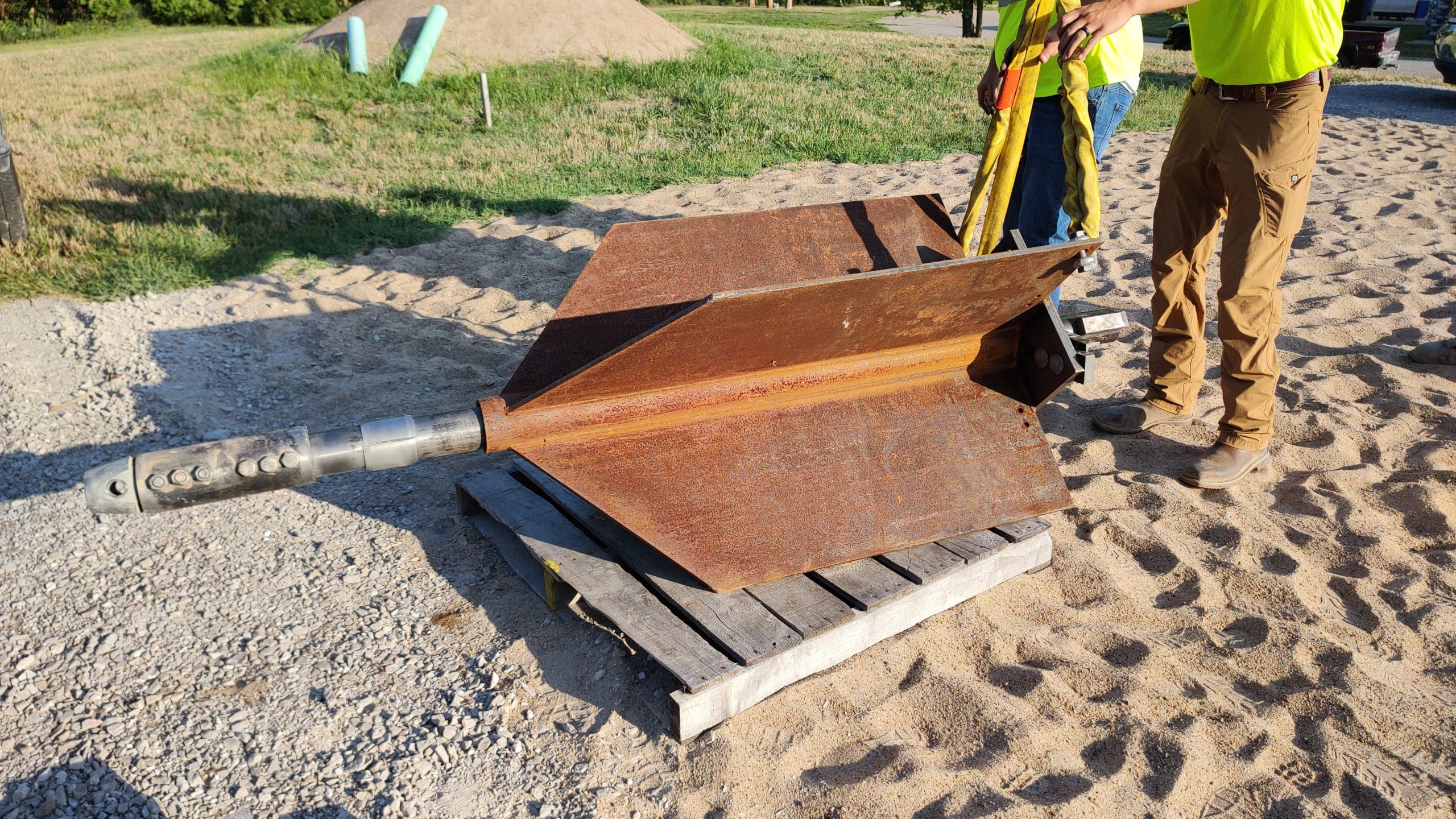
TIDC Research to Enhance the Lateral & Torsional Capacity of Helical Piles with a Novel Collar Vane
TIDC researchers are investigating novel solutions to enhance the lateral and torsional capacity of helical piles.
Conventional helical piles are lightweight foundational shafts designed for use in infrastructure assets such as streetlights, signposts, and other foundations. They are quick and easy to install, non-intrusive, less cumbersome, and less expensive than other deep foundation systems, allowing for highly optimized and rapid installation of assets. However, the tradeoff for this approach is that the lateral and torsional capacity (how much the asset can withstand without buckling) is lower when compared to more traditional foundational elements that must carry large lateral loads.
Researchers at the Advanced Structures and Composites Center’s Transportation Infrastructure Durability Center (TIDC) led by Aaron Gallant (UMaine) and Aaron Bradshaw (URI) are enhancing the lateral and torsional performance of helical piles through the incorporation of a novel collar vane.
The collar vane, a rigid wing-like addition to the helical pile shaft, is driven into the ground as part of the helical pile installation. It acts as an anchor, improving the stability and load capacity of these foundational assets. The goal is to significantly increase the lateral performance of helical piles so that they can be used to support structures that must resist high wind loads — a class of structures typically founded on piles or drilled shafts, two foundational approaches that are reliant on concrete and require highly specialized equipment to install.
To learn more about this research and the future work in this area, join the free TIDC webinar, Vastly Improved Helical Pile Performance Using “Collar Vane” Technology” on Mar 27, 2024 at 12:00pm.
The TIDC is the 2018 U.S. DOT Region 1 University Transportation Center located within the University of Maine Advanced Structures & Composites Center. TIDC’s focus is on extending the life and improving the durability of transportation assets. The University of Maine has partnered with The University of Connecticut, the University of Massachusetts Lowell, the University of Rhode Island, the University of Vermont, and Western New England University in collaboration with all 6 New England DOTs to create TIDC.
